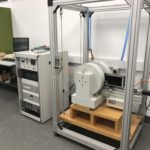Palaeomagnetism Laboratory
WESTERN AUSTRALIA PALAEOMAGNETIC AND ROCK-MAGNETIC FACILITY
The Western Australia Palaeomagnetic and Rock-magnetic Facility was established at UWA in 1990 by CCFS CI Z.X. Li, and has been progressively upgraded over the years. It is a national research infrastructure with the latest upgrade co-funded by the Australian Research Council and collaborating institutions including Curtin University, the University of Western Australia (UWA), the Australian National University, Macquarie University and University of Queensland. The facility relocated to Curtin University’s Bentley campus in 2017.
The latest upgrade includes the construction of a magnetically shielded room in mid-2015 by Dr Gary Scott’s team, which provides a laboratory space with ambient magnetic fields less than 0.5% of the local geomagnetic field. Within this shielded room we now have a new 2G 755 superconducting rock magnetometer with a vertical Model 855 automated sample handler (the RAPID system) and other accessories attached to it (automated AF demagnetiser, susceptibility meter, etc.). The RAPID system, the first and only one in Australia, was installed and commissioned in February 2017, and has been used by multi-institutional users to collect data since. Other systems now operating inside the shielded room include an AGICO JR-6A spinner magnetometer and ASC TD-48SC and MAGNETIC MEASUREMENTS thermal demagnetisers.
The AGICO MFK-1FA Kappabridge was relocated to the new Curtin facility from UWA in 2017, and the Petersen Instruments Variable Field Translation Balance (VFTB) along with the remainder of minor items in the UWA lab were moved to the Curtin facility in early 2018. Soon after consolidating all of the equipment in the facility at Curtin University the temperature-susceptibility module (CS4) was added to the Kappabridge and the VFTB system was upgraded to bring it’s electronic controllers up-to-date.
In 2024, a Quantum Diamond Mircoscope (from QDM.IO) was added to the facility to enable spatially resolved magnetic measurments to be performed on thin/thick sections or rock samples. This system is already providing great insight into the magnetic signal carriers and will enable innovative new techniques to be established within the facility.
The recent purchases represent a major enhancement to the productivity and capabilities of the facility. Apparatus which is now available in the facility include:
- a 2G 755 superconducting rock magnetometer with a vertical Model 855 automated sample handler (the RAPID system) and other accessories (including; AF coils, susceptibility meter, ARM, and IRM systems),
- a second 2G 755 cryogenic magnetometer upgraded to a 4K DC SQUID system (with a recent minor upgrade carried out by 2G Enterprises, including the repair of the lightning-damaged cold head),
- an AGICO JR-6A spinner magnetometer,
- a QDM.IO Quantum Diamond Microscope,
- 1x MMTD80, 2x MMTD18 and a TD-48-SC thermal demagnetiser,
- a Petersen Instruments Variable Field Translation Balance (VFTB),
- an AGICO MFK-1FA kappabridge with K-T capacity, and
- a MAGNETIC MEASUREMENTS MMPM5 pulse magnetiser.
The facility supports a wide range of research topics, including reconstruction of global palaeogeography (the configuration and drifting history of continents) through Earth’s history, studying the evolving geomagnetic field (e.g., palaeointensity) through time, analyses of regional and local structures and tectonic histories, dating sedimentary rocks and thermal/chemical (e.g. mineralisation) events, studying past climate changes, and orienting rock cores from drill-holes.
To request access to the Palaeomagnetism equipment please contact Dr Josh Beardmore.
-
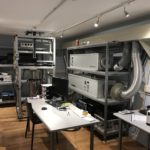
-
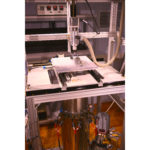
SONY DSC -
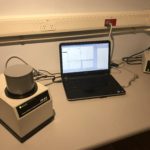
AGICO JR6A Spinner Magnetometer. -

ASC Scientific TD48SC Thermal Demagnetiser. -
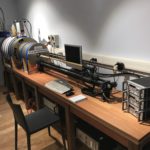
-
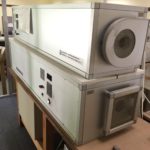
Two of the three Magnetic Measurements Thermal Demagnetisers (one 80 sample, and two 18 sample ovens). One oven is exclusively for palaeo-intensity experiements. -
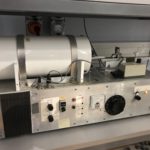
Molspin Tumbler AF Demagnetiser -

Magnetic Measurements Pulse Magnetiser. -

AGICO MFK1 Kappabridge -
